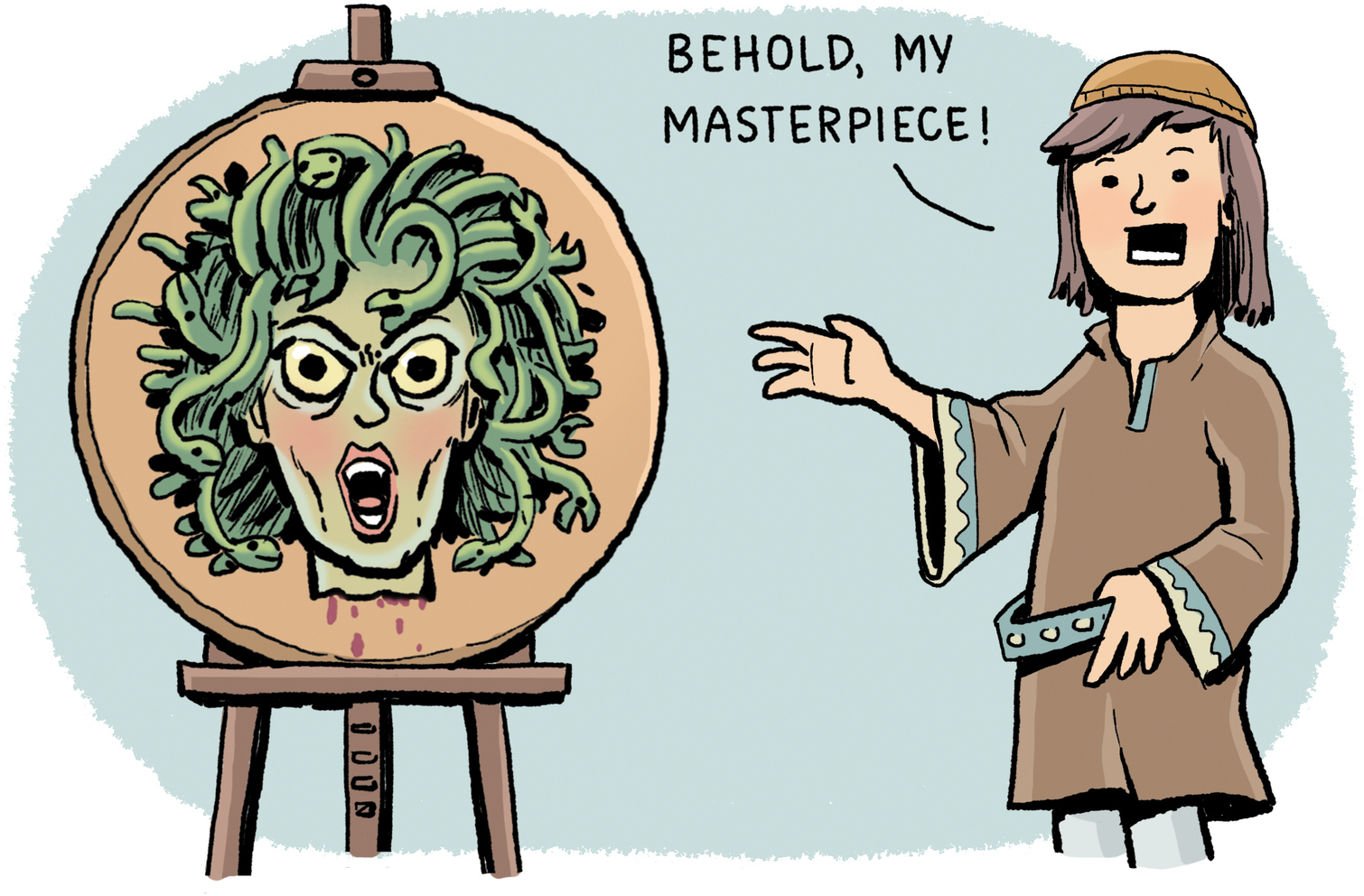

Nature always fascinated Leonardo da Vinci, who would grow up to be not only a great artist but also one of the Renaissance world’s eminent scientists. Much of what he knew about animal and plant life he learned by taking long, solitary walks through the rolling hills of his native Tuscany, carrying a sketchbook in his hand. “While you are alone, you are completely yourself,” he once said. “You should say to yourself, ‘I will go my own way and withdraw apart from others, the better to study the form of natural objects.’ ”


But as fascinating as it was, the natural world could also be a source of great mystery and terror. Young Leonardo learned that lesson one day when he was walking alone in the countryside, hoping to see the “multitude of varied and strange forms created by nature.”
He stumbled upon the entrance to a large cavern, deeper and darker than any he had ever seen. Leonardo lingered by the entrance to the cave for a long time. He bent down, peering into it, looking for signs of movement. He was afraid, but also intensely curious. Did he discern a monster lurking inside?


Leonardo never found out; he was too scared to explore any farther. But the vision of the cave creature stayed with him for the rest of his life, fueling his desire to depict the marvels of the natural world—and on one memorable occasion, the unnatural world as well.
In 1466, when Leonardo was fourteen years old, his father sent him to Florence to work as an apprentice to a renowned painter, sculptor, and goldsmith named Andrea del Verrocchio. Life in Verrocchio’s workshop was often tedious. Leonardo spent his days grinding pigments, shopping for groceries, and running errands for the master. He worked hard and was rewarded with invaluable instruction in the arts of drawing, painting, and anatomy. Leonardo quickly became one of Verrocchio’s prize pupils and grew into a formidable artist in his own right.
One day, according to a sixteenth-century art historian named Giorgio Vasari, a farmer friend presented Leonardo’s father, Ser Piero da Vinci, with a round shield made of fig wood; he asked to have it decorated in Florence. Leonardo’s father passed the job on to his son, instructing Leonardo to paint an image on the front of the shield.


In his quest for inspiration, Leonardo thought long and hard, wracking his brain for a suitably terrifying subject to adorn a warrior’s shield. What could he paint that would be so horrible that it would frighten anyone who gazed upon it? Perhaps it was then that Leonardo thought back to his past experience of peering into the darkened cave in search of a monster.
All of a sudden the idea came to him. Leonardo remembered the Greek legend of Medusa, a monstrous Gorgon whose hair was made of poisonous snakes. It was said that anyone who looked upon her face would instantly be turned to stone. What better way to vanquish your opponent than by petrifying him with Medusa’s glowering head on your shield?


And so that’s what Leonardo painted. He retreated to his room in Verrocchio’s workshop, directing all the power of his imagination into creating a hideous image of the serpent-haired Medusa leaping out from behind a mound of broken stones, spitting venom, breathing fire, and sending smoke pouring out of her nostrils. It was a horrible sight to behold—and Leonardo loved it.
When the shield was finished, Leonardo summoned his father to pick it up. Ser Piero arrived in the early morning, eager to return the commission to the farmer and collect payment. He knocked on his son’s door, but Leonardo cracked it only a little and told him to wait a moment. He then went back and into his room and shuttered the window, creating total darkness, with only a single shaft of light illuminating the shield. Then Leonardo beckoned his father to enter.


As soon as he saw the shield, Ser Piero staggered backward. Convinced that a gargoyle or some other awful monstrosity had perched itself on the shield, he turned to run away. But Leonardo stopped him. “The work answers the purpose for which it was made,” he declared. “That was the effect I wanted to produce!”


Ser Piero refused the shield. He could not bear the thought of subjecting anyone else to the same macabre surprise he had just experienced. Instead, he found another shield, painted it with the image of a heart pierced by a dart, and gave it to his farmer friend.
So what ever happened to Leonardo’s Medusa? According to legend, Ser Piero sold the shield to a group of Florentine merchants for a hundred ducats. They in turn sold the artwork to the Duke of Milan for three times that price. But no one is really sure. The shield has long since vanished, a lost treasure from the old master’s childhood that continues to haunt us. Who knows? Perhaps one day someone will discover the horrifying shield, buried among the treasures in a dusty antiques store.

